The 27th edition of Miart, Milan ’s international modern and contemporary art fair organized by Fiera Milano, is kicking off: so from April 14 to 16 the public can return to visit the event directed for the third year by Nicola Ricciardi and dedicated to modern masters and established and emerging contemporary artists. The 2023 edition features 169 galleries from 27 countries around the world, revolving around the word Crescendo and thus continuing its music-inspired imagery: after “dismantling silence” in 2021 and initiating a “first movement” in 2022, the fair intends to increase the level of participation and audience, just as a sound gradually increases in intensity does. After the press preview, we selected ten booths that we found interesting in terms of their proposals and quality. Here are which ones.
The Roman gallery, in collaboration with the Archivio dell’Opera di Duilio Cambellotti, dedicates its booth precisely to the Roman artist who was among the animators of the Monza exhibitions and awarded the grand diploma of honor for his Studio Room in 1923. On the occasion of the centenary of the first edition of the International Biennial of Decorative Arts in Monza (1923-2023), the gallery is displaying a select selection of Cambellotti’s works, including historical drawings of objects, furniture and stained glass projects for Monza, along with a selection of ceramics, illustrations, engravings and sculptures made by the artist up to the 1930s. The focus ideally concludes the exhibition Duilio Cambellotti at the Monza Biennials and Beyond. Gathering a Form Around a Thought, which was just held at the gallery, offering itself as the central event of the spring exhibition schedule. The booth also presents a selection of works by major protagonists of the Italian art scene of the 20th century: of particular interest is Mario Sironi’s Study for the mosaic La giustizia tra la Forza, la Legge e la Verità (Justice between Strength, Law and Truth) from the Palazzo di Giustizia in Milan.

Very clean booth for London-based gallery Ravens-Mora, which brings to Miart the work of two artists, British painter Dee Ferris, born in 1973, and American ceramicist John Lindell, born in 1956. Dee Farris is distinguished for her hazy, evocative landscapes: the images she processes are systematically subjected to an intense process of dissolution and re-emerge as paradoxical, precipitous visions that question what we see. The artist’s idea is to reflect on themes such as desire, nostalgia, loneliness, and migration. Lindell is known for his vases (some of which he exhibited at Miart), which can be seen as works endowed with the potential for function and connection to the everyday and the domestic; at the same time, they intend to bear a subversive message with their forms. In Lindell’s ceramics, the interior space is as important as the surface, just as it is in the human body: that is why his ceramic sculptures are meant to be true tactile experiences and require to be held. Works sold at, moreover, low and attractive prices.
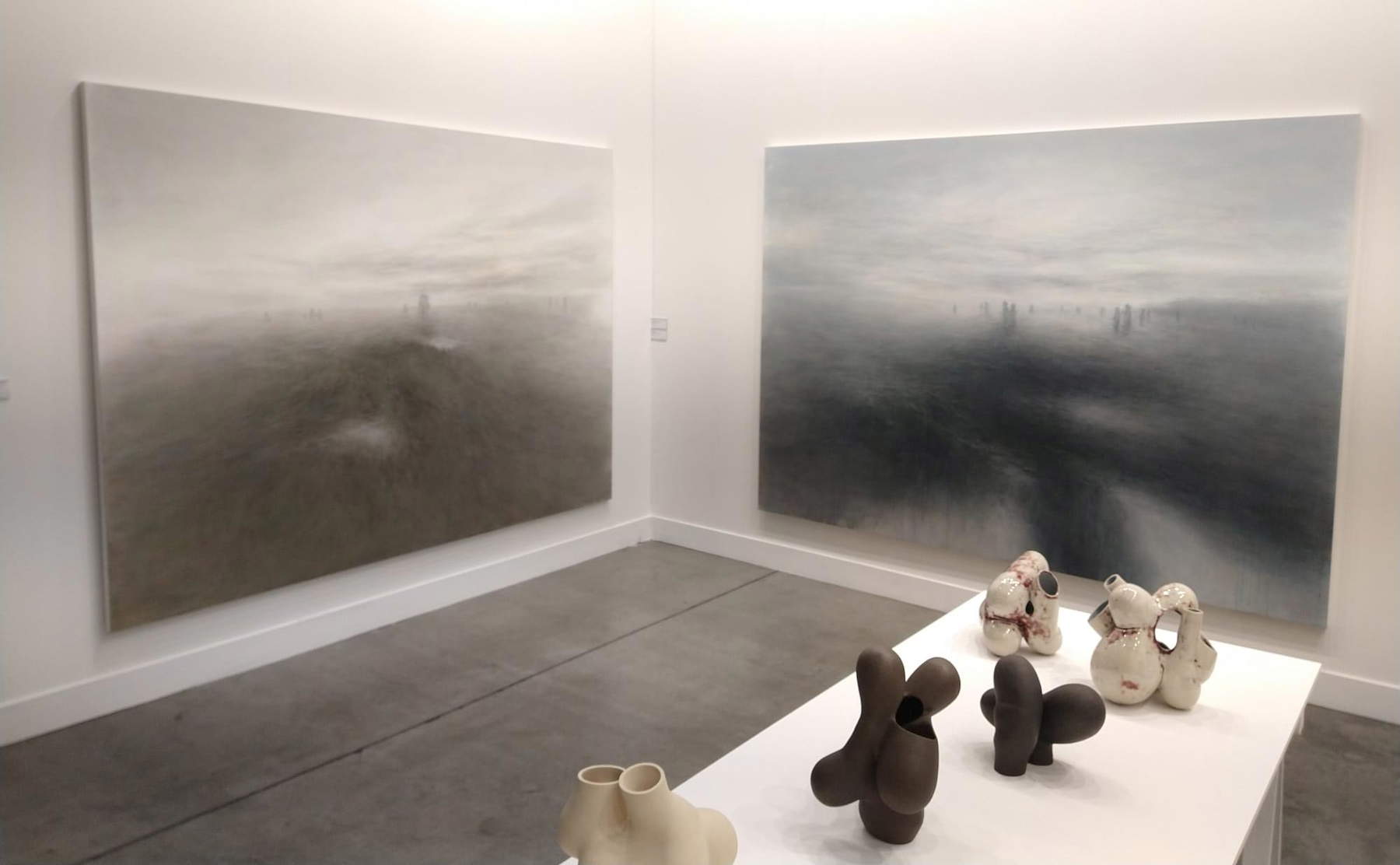
Among the galleries that stand out in the Emergent section is American Olympia, which presents Fire Below, a solo show of works on panel and canvas by U.S. veteran Kathleen Goncharov. An artist with a singular history: for years her artistic pursuit took place privately, in parallel with her career as a high-level curator (including curating the U.S. pavilion at the 50th Venice Biennale, among other achievements), and she only emerged last year with a debut exhibition held by Olympia itself. She began painting after a trip to Italy in which she saw late Gothic and early Renaissance works and developed a delicate language with a rich palette, abstract forms that revisit what she observed in Italy. The reference colors are those of the Sienese painters, such as Duccio di Buoninsegna, Giovanni di Paolo, Sassetta, the Master of the Osservanza, and Sano di Pietro, artists whom Goncharov went on to study regularly, even with repeated trips to Italy. The subjects, on the other hand, are distant: there is none of the religious epic and moral tension of the ancient paintings in Goncharov’s work, only the idea of evoking seductive atmospheres and recalling the great tradition with the sole use of color. Must-see. Very attractive prices.

This Milanese gallery brings together in its booth works by Italian and international artists made from the second half of the 20th century to the present, using a wide variety of techniques, from painting to sculpture to neon. They range from works such as Simone and Father in Florence from 1965 by Simone Forti to much more recent works, such as Francesco Arena’s Little God (1), Yael Bartana’s Scenes from Malka Germania (II ), both from 2022, or even made this year, such as Marcello Maloberti’s Gli sbagli si infilano come perle. Then there are added works by Miroslaw Balka, Monica Bonvicini, Silvia Bächli, Alejandro Cesarco, Michael Fliri, Edi Hila, Joan Jonas, Helen Mirra, Kiki Smith, and T. J. Wilcox, all made between 2005 and 2020. A journey through the contemporary art scene through big names.
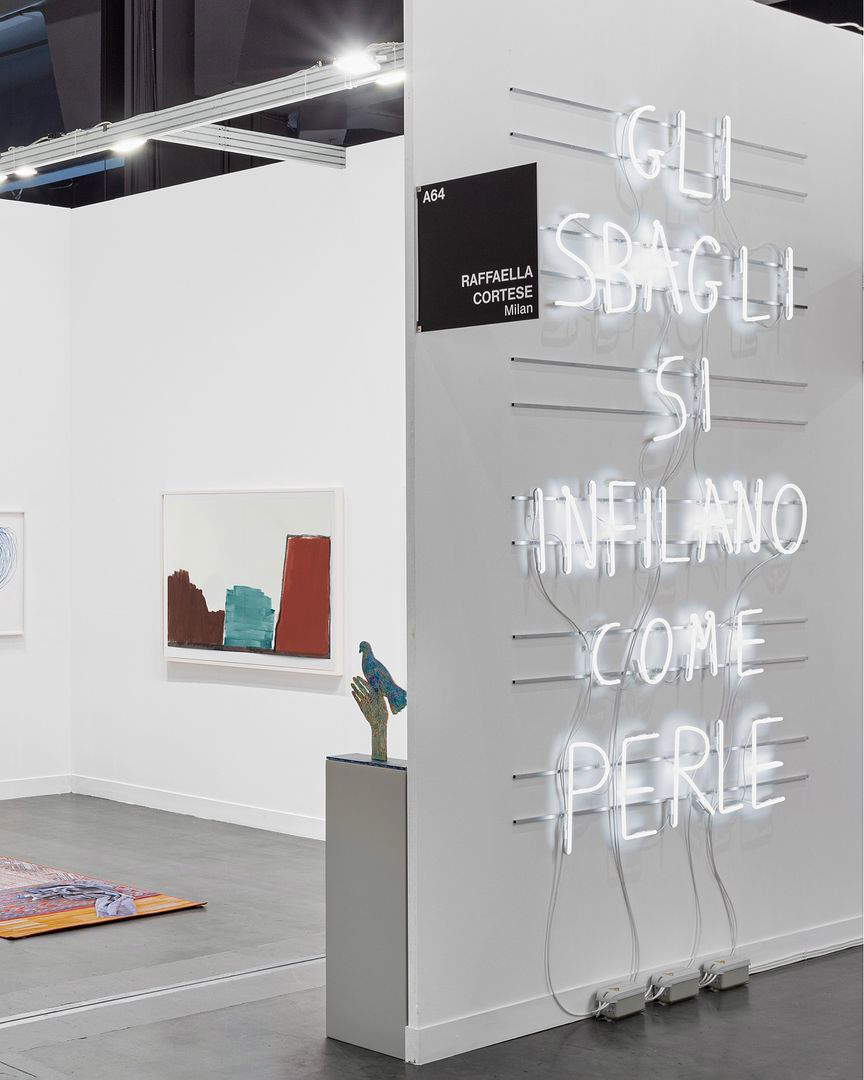
Interesting mix of historical and established contemporary names that of the Sarzana gallery, which moreover is one of the very rare galleries that at Miart displays prices in plain text (at the booth there is a QR Code where the complete catalog of what visitors have in front of their eyes is available: well-deserved applause for this choice that we hope will become a common practice). Here, then, are works. There are two pioneers of abstractionism such as Mauro Reggiani and Mario Radice, and for contemporary paintings by two of the gallery’s leading names, namely painter Beatrice Meoni and sculptor Fabrizio Prevedello, both with works made in the last year and sold at prices that are sure to be of interest. Another booth not to be missed.
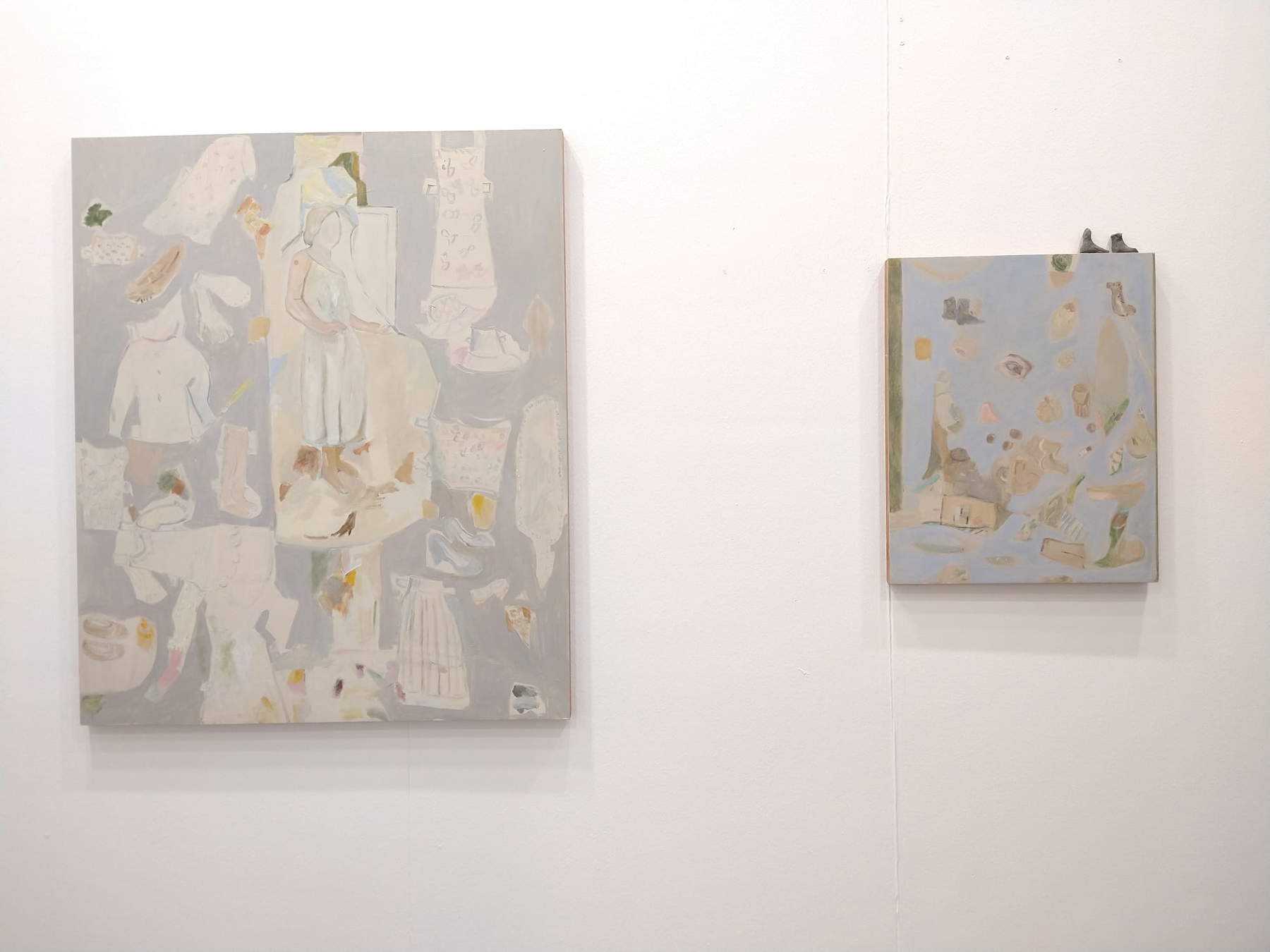
Monographic booth dedicated to Olu Oguibe, whose works are characterized by a reflection around form and color that dictates his approach to conceptualism and abstraction. The works on paper emanate a particular vital force given by the hues used. Colors and forms have been carefully selected for their connection to the artist’s homeland and personal history. Olu Oguibe, born in Nigeria in 1964, takes up the colors of the IGBO tradition, an African ethnic group to which he belongs and which was among the protagonists of the Biafra Civil War in the late 1960s. This monumental human tragedy shaped the social self of the artist, who incorporates the colors of the Biafra flag into his art, recalling a certain sense of belonging. Just as one’s own experience has a subjective internal resonance, the colors of his works also generate an emotional echo of self-determination in the viewer. Colors and shapes are also central in his sculptures derived from metal scraps collected at the UEB “Noel Fernández” Conformat steel mill in Matanzas, Cuba, in February 2019, for the CUBA PROJECT presented by Galleria Giampaolo Abbondio the same year. The faded rust color encapsulates a certain resilience to time and change that is intertwined with a contemporary imagery. Some of these sculptures are reminiscent of tribal objects, others of urban landscapes, and still others of three-dimensional compositions in the style of Morandi. All, however, revolve around the powerful resonance of form evident even in the watercolors. Here Oguibe again observes the found metal objects, makes them miniatures and places them in the sheet making them pictorial forms in a collected space, as if to catalogue them.

The Milan gallery presents in its booth the internationally renowned artist couple Anne and Patrick Poirier (born in Marseille in 1941 and Nantes in 1942, respectively, and met during their residency at the French Academy in Rome in 1968). Through their works, Fumagalli Gallery wants to acquaint the public with the artists’ multifaceted research, the result of archaeological and ethnographic studies, reflections and travels mainly in the Far East, the Middle East, the United States and Italy. The works chosen for this occasion document some of the fundamental themes of the couple’s poetics, especially the condition of fragility and transience that characterizes human existence and the traces of experience.

Umberto Benappi brings to miart a selection from the exhibition Souk mondano, a monograph of Aldo Mondino organized by NP-ArtLab in collaboration with Galleria Umberto Benappi and Archivio Aldo Mondino. It is a focus on Mondino’s works influenced by his travels to the East. An eclectic and multifaceted artist, his artistic practice traversed different styles and influences, including 20th-century European art, surrealism and pop art, without ever belonging to any group or movement. Mondino has always refused to be framed in art-historical boxes, putting before him an approach rich in experimentation in terms of both materials and techniques and subjects. An endless search, a stubborn need to experiment giving birth to a heterogeneous work in perpetual dialogue with art history. The works allude to the impact that the journeys made by the artist, in a metaphorical as well as physical sense, have had on the development of his work. Mondino accompanied this flânerie of his with the curiosity and irony that are the stylistic hallmarks of his work, translating what he had seen during his peregrinations into Mondinoan terms.
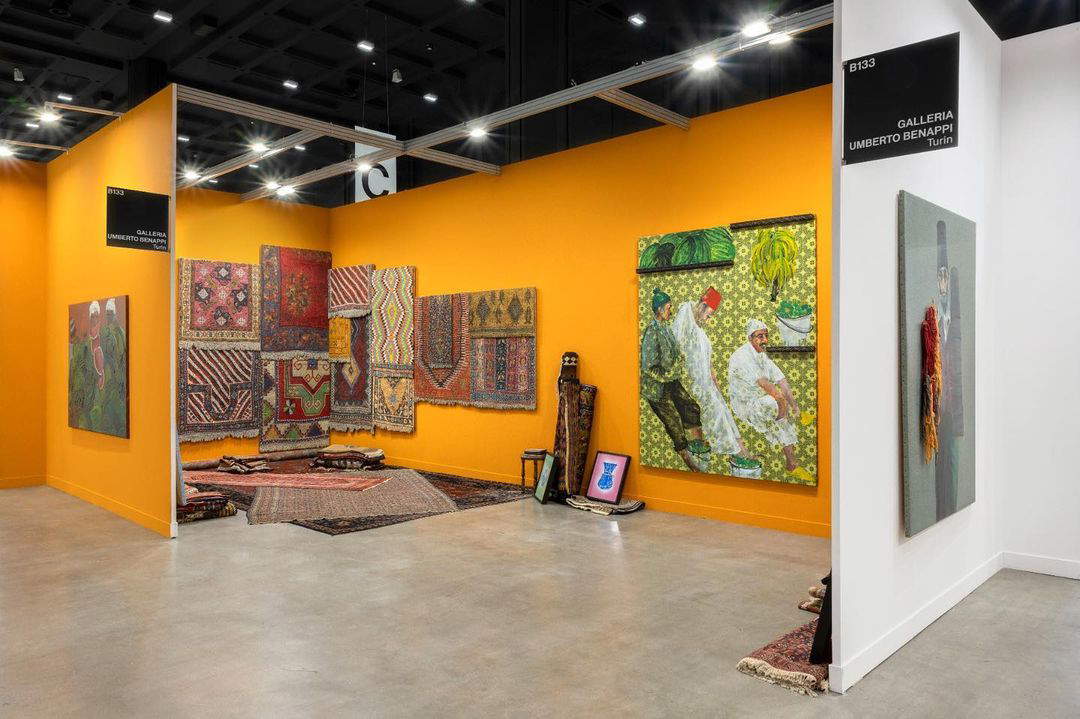
Another gallery to watch out for in the Emergent section, with a single show by American Olivia Hill, class of 1985 from Hinsdale, Illinois. Her paintings mix Leon Battista Alberti and Google Earth to capture, for example, the viewpoint of someone driving along a highway winding through canyons, or a landslide in the Hollywood Hills, or a sand castle melting into the waves of the sea. His idea is to show the way the landscape changes. Why do we start with Alberti? Because the great architect, in De Pictura, compared the rectangular shape of the painting to that of a window frame, and this implies that in order to understand and perceive a scene, the observer needs to be at a firm and precise point. Today the window metaphor is often linked to the screens we use to navigate the world, but how do we find our vantage point? Olivia Hill’s paintings attempt to answer this question.
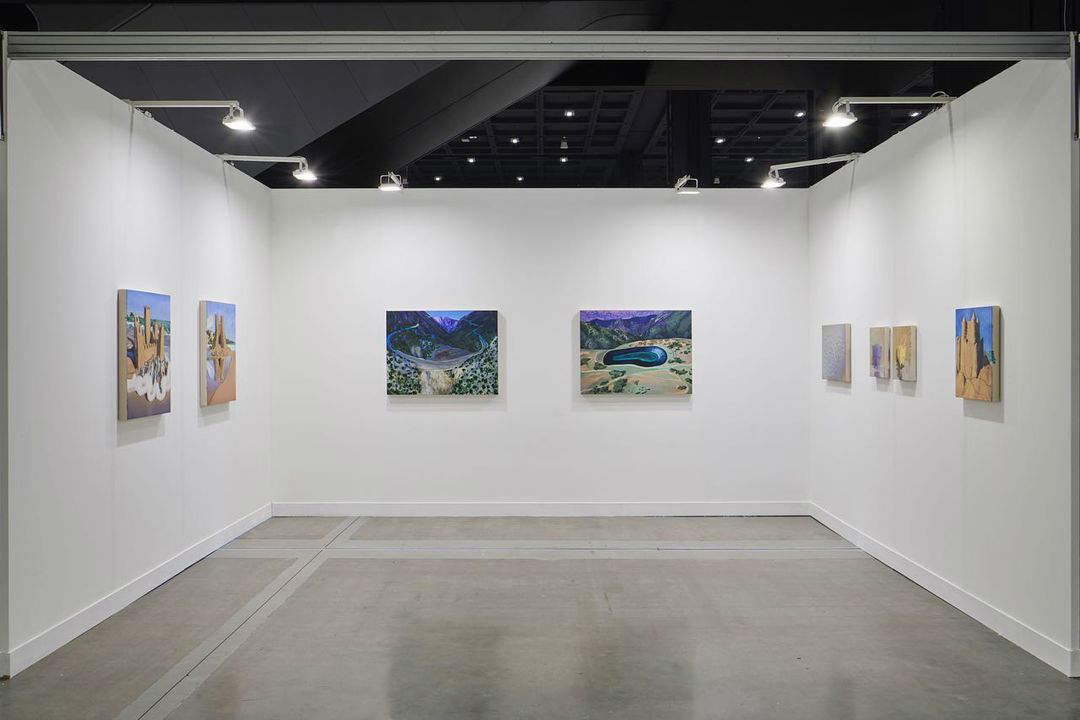
The Scottish gallery brings to Miart the bestiary of Colombian Miguel Cardenas. His paintings, where landscapes and animals coexist, depict impossible viewpoints far and near, flat and three-dimensional, alive and static. Flora and fauna meet representations of archaeological objects on a stage that seems at once an elaborate metaphysical recreation of the outside world and a visit to a personal museum. His works are influenced by both the pre-Columbian cultural substratum and modern European art, leading to works that seek to convey our fascination with a more primal understanding of the world. Another reasonably priced artist.

Warning: the translation into English of the original Italian article was created using automatic tools. We undertake to review all articles, but we do not guarantee the total absence of inaccuracies in the translation due to the program. You can find the original by clicking on the ITA button. If you find any mistake,please contact us.